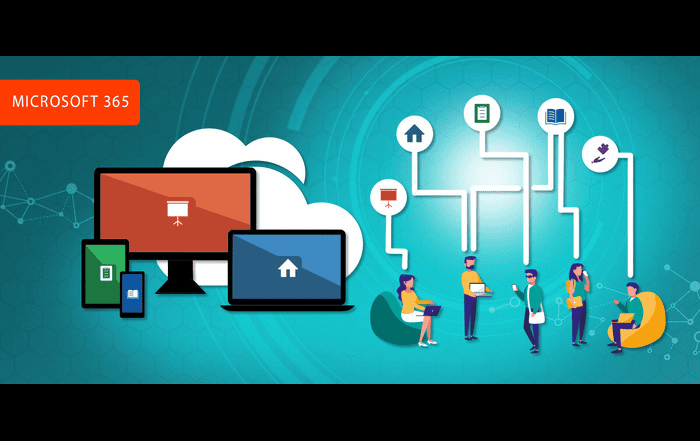
High-speed internet, cloud-based platforms, and powerful apps have made it possible for just about any type of work to be done remotely, without compromising team-building and work quality. No better evidence of this exists than the large companies that have made the 100%-remote model a success.
Web design and development, social media management tools, time-tracking platforms, and publishing – these are some of the careers or industries where remote-work models have helped employees and companies thrive.
Driving factors could include employee morale, higher productivity, lower overheads, and access to diverse talent pools around the world. So what are examples of thriving remote-only companies, and how has been fully remote benefited employees and the business itself?
Successful remote-only large businesses
Automattic, creator of products like WordPress.com, WooCommerce, Gravatar, and Tumblr is a fully remote company with 1,156 staff across 94 countries. Its leadership views being 100% remote as a major advantage for building a stronger workforce.
Founder Matt Mullenweg says the organization focuses on hiring the best people in the world and letting them do their work by getting out of their way. Similarly, Hubstaff, which provides staff-monitoring and time-tracking software, has benefitted from its remote-only model.
According to Dave Nevogt, Co-Founder, the fully virtual set-up has allowed the company to find valued team members from all around the world. It also empowers Hubstaff to demonstrate their software can be leveraged to help remote teams and businesses succeed.
Another successful fully distributed organization is GitLab. As a code collaboration platform, GitLab is both a community project and a high profile tool used by Fortune 500 companies. With staff located across three continents, GitLab has thrived with its fully remote workforce, which has been built in part on a philosophy of giving credit to employees where it’s due.
Other thriving fully remote companies include How-To Geek, InVision, Scrapinghub, and Zapier. Each of these companies recognizes the advantages of being able to hire the best people regardless of location, and they understand technology has made going 100% remotely feasible for a wide variety of roles.
Remote-only work: benefits for employees
Fully remote employees can work for any company in the world, without the need to relocate or spend time and transport costs on a daily commute. Workers might negotiate more flexible work hours or even become digital nomads and travel as they work.
This can, in turn, support a better work-life balance. Remote work could reduce stress and boost productivity and morale if managed the right way. Semi-remote workplaces could be associated with certain power imbalances due to some people working remotely and others in the office. As such, when everyone working on a remote basis gives the best foundation for a level-playing field.
Additionally, reputable 100% remote organizations provide similar benefits as other employers. For example, organizations like Zapier, How-To Geek, InVision, and Scrapinghub offer health insurance, generous vacation time, and paid retreats.
Remote-only models: benefits for companies
With a 100% remote team, companies are free to employ the most qualified staff. They’re no longer competing with local firms for limited top talent. Employees value the option to work from home and so remote-only companies can find it easier to attract and retain in-demand talent.
Organizations can realize significant savings on office overheads by reducing spacing and other requirements, and in the process, gain credibility and credentials as a greener business. Research suggests the majority of employees would be willing to take as much as 5% to 10% pay cut in exchange for working from home, which means companies could save further, through labor costs.
These work environments could provide a more positive work culture because they’re based on giving employees the space to do their best work without micromanagement. Employers are focused on the work that’s produced. As such, appropriately managed, a remote workforce could achieve higher productivity.
At the same time, apps like FaceTime, Slack, Trello, Google Docs, and Zoom support team-building and collaboration. They could minimize the potential impacts of physical distance on team bonding and effective communication. Finally, fully remote companies can enjoy reputation benefits due to being perceived as cutting-edge or futuristic.
Potential challenges of full-remote business models
Remote-only organizations face their fair share of challenges. Employees need to be held accountable, motivated and managed in the right way, and they need to be self-disciplined and focused. Effective communication and collaboration can be major challenges.
That’s why it is important to address the sense of isolation, fostering genuine collegial bonds and empathy, and building trust can be important. Creating focused time, and ensuring employees connect with the company’s vision are other potential challenges. Tracking productivity and setting clear standards are other challenges businesses need to confront on the path to a thriving fully remote organization.
100% remote companies that plan to convert into an office-based business could find it challenging to get their staff on board, and new hires will probably be required. As fully remote companies scale up, they can face hurdles like sustaining a strong, cohesive culture and coordinating complex projects across functions, with the right processes.
Finally, working across multiple time zones is another potential barrier to success. Companies that have employees in different countries need to successfully deal with multiple regulatory frameworks for compliance obligations like tax and employment laws.
Fully remote businesses can thrive if managed right
Although fully remote organizations come with their challenges, they offer valuable lessons for businesses that seek to go partially or fully remote. At the same time, challenges like building strong team relationships, culture, and employee accountability need careful management.
Beyond the obvious cost savings, fully remote arrangements help companies attract and retain talent, especially millennials who by large prefer working from home. As technology tools supporting remote work become more sophisticated, increasing numbers of businesses could shift into mostly or fully remote workplaces.








